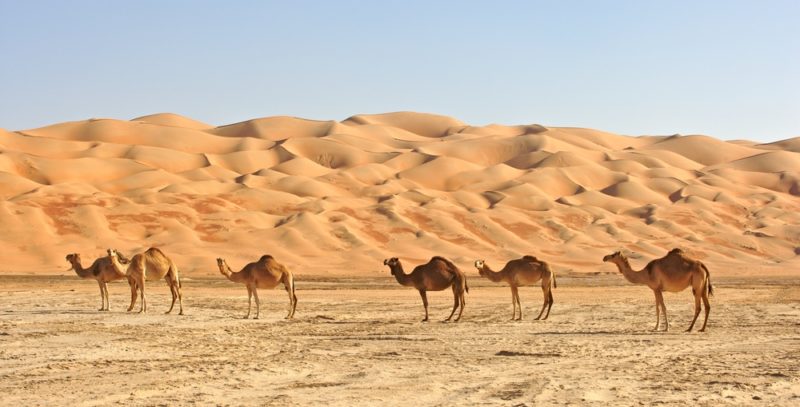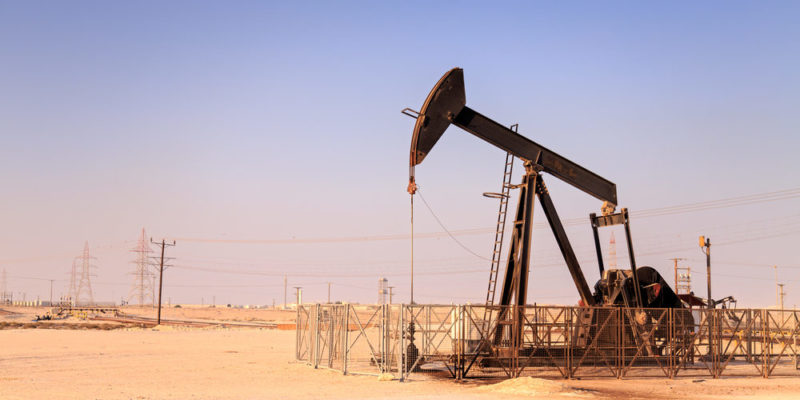We explain everything about the Middle East, where it is located, and what its geography is like. Also, what are its features, economy, and more?
What is the Middle East?
The geographical region that joins North Africa, Eastern Europe, and Southwest Asia is known as the Middle East or the Middle East, becoming a kind of intermediate continent of transition between different regions and cultures.
It is a widely used term, despite the fact that there is no strict agreement regarding its delimitations or exactly which countries it encompasses. It is often confused with the Middle East or even Western Asia, which denote different territories.
The popularity of the term is often attributed to the imposition of the English word for the region, Middle West, of British origin, which is why it is considered a Eurocentric term.
It would have been used in the late 19th and early 20th centuries to distinguish between colonial British India and neighboring Arab countries, such as those of the Persian Gulf.
The geographical location of the Middle East
As has been said, the Middle East is located at the confluence point of the Asian, European, and African continents, towards the center of the traditional planispheres.
It is found in the northern and eastern hemispheres, around 13 ° and 370 ° north latitude and 34 ° and 63 ° east longitude.
Middle East Extension

It is one of the largest areas in the world, including the Arabian peninsula, the largest known. Its total area is around 5,402,000 km2, 4% of the planetary territory, and its borders border: Georgia, Azerbaijan, Caspian Sea and Turkmenistan (North), Afghanistan, Pakistan, the Persian Gulf and the Gulf of Oman (East), the Arabian Sea and the Gulf of Aden (South) and the Red Sea, the Egyptian Sinai Peninsula and the Mediterranean Sea (West).
Countries that makeup the Middle East
The region is traditionally comprised of 19 countries, mostly Arab, which are: Saudi Arabia, Bahrain, United Arab Emirates, Iraq, Iran, Israel, Jordan, Kuwait, Lebanon, Libya, Oman, Qatar, Sudan, Palestine, Syria, Yemen, Cyprus, Egypt, and Turkey.
It is worth clarifying the controversial status of Palestine, whose territory has been in dispute with Israel since the creation of the latter country in the 20th century, within the framework of the Arab-Israeli conflict.
Geography and climate of the Middle East

The region is basically flat and arid, with the presence of extensive deserts towards the interior of the Arabian peninsula (continuation of the Sahara desert), in contrast to the alluvial plains of Mesopotamia, irrigated by the Tigris and Euphrates rivers. The precipitations are little and the majority of the rivers impassable, but useful for the irrigation of the land.
The subsoil is rich in minerals and oil, as well as underground water reserves. The average climate is warm during the summer and cold during the winter, with much thermal variation, although within the limits of the subtropical belt.
Middle East Population

The total population of the Middle East is estimated at about 411 million people (2008 census), with a growth projection that predicts to exceed 600 million by the year 2050.
This implies a high growth rate, which however can vary greatly from one country to another, the highest being that of Jordan (3.0%) and the lowest that of Iran (1.4%), for an average of 2.2%.
Ethnically, the population of the Middle East is predominantly Arab, making it more or less uniform, with the notable exception of the State of Israel, which is made up almost entirely of Jewish citizens.
The most populated areas of the region are those of the Levant, that is, the Mediterranean coasts of Syria, Israel, Lebanon, and Palestine. In contrast, the desert region in the interior of the Arabian peninsula is very sparsely populated.
The largest urban population is found in Kuwait (98%) and Qatar (96%), and the least urbanized in Yemen (31%).
Middle Eastern culture

The Middle East is considered one of the cradles of human civilization, so there are living or archaeological traces of its ancient cultures, of capital importance in the history of humanity.
The Mesopotamian region, for example, was key in the origin of ancient cultures that invented the foundations of civilization, such as writing; Persian civilization, also present in Iran, is a millenary culture that disputed with Hellenic Greece the supremacy of the world in its time.
As if that were not enough, the three great monotheistic religions of the world come from the Middle East: Judaism, Christianity, and Islam.
At present, the area is culturally Arab-Muslim, with the exception of Israel and Lebanon, where there is a presence of Jewish and Catholic cultures respectively.
The languages spoken in the region are, firstly, Arabic in its various and numerous variants, then Persian or Farsi, and then Turkish. Other languages of importance are Kurdish, Aramaic, Syriac, Hebrew, Greek, Urdu, and Armenian.
Fauna and flora of the Middle East

Animal and plant life in the region is adapted to intense climatic conditions, typically composed of xerophilous vegetation and resistant animals.
The presence of the camel, for example, domesticated and used as a beast of burden and method of transportation, is emblematic.
However, towards the slopes of the mountainous massifs (such as the Iranian plateau ) or on the margins of the Oases, the vegetation flourishes taking advantage of the higher humidity and agriculture, grazing, and the exploitation of dates are possible.
Middle Eastern Economy

The region is typically mining since in its subsoil lie around 60% of the hydrocarbon deposits of massive consumption in the contemporary world, especially oil.
This has allowed the rise of enormously wealthy countries such as Qatar, Kuwait, the United Arab Emirates, and Saudi Arabia.
Middle East Politics
The region predominates in more or less absolute forms of monarchy, although there are more westernized countries that practice democracy.
International politics in the region is complex, as it has been the scene of numerous conflicts, wars, and foreign interventions.
An example of this is the so-called Arab-Israeli Conflict, which originated after the First World War, after the fall of the Ottoman Empire, when France and Great Britain colonized the region and favored Jewish immigration into Palestinian territory.
Another was the Persian Gulf War (1990-1991), a series of armed conflicts between Iraq and Kuwait, the latter supported by a coalition of countries led by the United States; or the recent Iraq War (2003-2011), in which a new coalition of countries led by the United States invaded Iraq with the excuse of ousted dictator Saddam Hussein.
The geopolitical importance of the Middle East

The Middle East is not only a source of mineral and energy riches that sustain the way of life of contemporary capitalism, but it is also a tactically vital region since it connects three continents and involves a point of contact between the western and eastern world.
In addition, the region has access to various seas, such as the Mediterranean, the Red Sea, the Persian Gulf, the Caspian Sea, and the Indian Ocean.The above content published at Collaborative Research Group is for informational and educational purposes only and has been developed by referring to reliable sources and recommendations from technology experts. We do not have any contact with official entities nor do we intend to replace the information that they emit.
Abubakr Conner brings a diverse skill set to our team, and covers everything from analysis to the culture of food and drink. He Believes: "Education is the most powerful weapon that exists to change the world." .
Leave a reply
Your email address will not be published. Required fields are marked *Recent post

Sport: What Is It, Types, Risks, Features, Characteristics and Examples

Dogs: Emergence, Features, Characteristics, Feeding and Breeds

Story: Definition, Elements, Structure, Features and Characteristics

